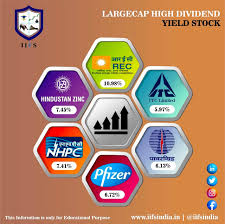
You have many options when it comes to Forex strategies. These strategies vary widely in their effectiveness. Some strategies involve copy trading, which involves following the trade instructions of others. This is a very popular way of trading, since it requires very little to no work on your part. Some strategies use technical analysis which can be ineffective during euphoric market conditions. For instance, moving averages, trend lines, and oscillators can be weak in such a situation.
Technical analysis
Before you can apply technical analysis to your trading, you need to know how to use it. Technical analysis can be overwhelming for beginners. It is a good idea not to get too involved in technical analysis. Instead, focus on just two or three main indicators: breakouts and trends. These indicators should be used together to create your own strategy. Investopedia is not a professional financial advisor. Before making any investment decisions, consult with a professional.

Pivot points
Pivot point are areas in the market where prices change frequently. They cannot forecast future price movements. However, they can help to identify key entry and departure points. Pivot point can be used in currency trading. Here are some tips on how to use pivot points when trading. First, you need to know where your stop-loss limits should be located. Once you have determined a pivot point, you will be able to place a sell- or buy order around that point in order to make a profit.
Moving averages
Moving averages are a forex trading strategy that can help you make money. Moving averages are not an ideal solution. They should not be used to predict the future. Because moving averages are not able to keep up with price action, they should be considered in conjunction with price action to make the best trading decisions. This article will cover the most important considerations when using moving-averages to trade forex strategies.
Trend trading
While a moving average can help you to predict the future direction of a currency pair, a trend trading strategy can also help you identify the past. This strategy employs two exponential moving averages, (EMAs), to determine the future direction of a currency pair. Traders who are entering a long trading position will trade when the fast EMA crosses either the slower or higher EMA. These strategies can also be used to trade based only on one indicator or a combination.

Breakout trading
A breakout trader looks for a level or area where price has not yet moved. He then waits for the market to move beyond that level. Once the price breaks the previous resistance, he then buys and sells a position. This trader will typically make profits from both sides of the market and is able to identify the right side of the market to enter. For the breakout to be tradeable, the price must first break above the resistance level before moving on to the next level.
FAQ
What is a mutual fund?
Mutual funds consist of pools of money investing in securities. They offer diversification by allowing all types and investments to be included in the pool. This helps to reduce risk.
Professional managers manage mutual funds and make investment decisions. Some funds also allow investors to manage their own portfolios.
Mutual funds are often preferred over individual stocks as they are easier to comprehend and less risky.
How can I find a great investment company?
You should look for one that offers competitive fees, high-quality management, and a diversified portfolio. Fees vary depending on what security you have in your account. Some companies don't charge fees to hold cash, while others charge a flat annual fee regardless of the amount that you deposit. Others charge a percentage on your total assets.
You should also find out what kind of performance history they have. You might not choose a company with a poor track-record. Avoid companies with low net assets value (NAV), or very volatile NAVs.
You should also check their investment philosophy. An investment company should be willing to take risks in order to achieve higher returns. If they're unwilling to take these risks, they might not be capable of meeting your expectations.
What's the difference between marketable and non-marketable securities?
The key differences between the two are that non-marketable security have lower liquidity, lower trading volumes and higher transaction fees. Marketable securities, on the other hand, are traded on exchanges and therefore have greater liquidity and trading volume. These securities offer better price discovery as they can be traded at all times. This rule is not perfect. There are however many exceptions. For example, some mutual funds are only open to institutional investors and therefore do not trade on public markets.
Non-marketable securities tend to be riskier than marketable ones. They usually have lower yields and require larger initial capital deposits. Marketable securities are typically safer and easier to handle than nonmarketable ones.
A bond issued by large corporations has a higher likelihood of being repaid than one issued by small businesses. Because the former has a stronger balance sheet than the latter, the chances of the latter being repaid are higher.
Marketable securities are preferred by investment companies because they offer higher portfolio returns.
Are bonds tradeable
The answer is yes, they are! They can be traded on the same exchanges as shares. They have been for many years now.
The only difference is that you can not buy a bond directly at an issuer. You will need to go through a broker to purchase them.
Because there are less intermediaries, buying bonds is easier. This also means that if you want to sell a bond, you must find someone willing to buy it from you.
There are many kinds of bonds. While some bonds pay interest at regular intervals, others do not.
Some pay interest annually, while others pay quarterly. These differences allow bonds to be easily compared.
Bonds are great for investing. For example, if you invest PS10,000 in a savings account, you would earn 0.75% interest per year. This amount would yield 12.5% annually if it were invested in a 10-year bond.
If all of these investments were accumulated into a portfolio then the total return over ten year would be higher with the bond investment.
What is the trading of securities?
The stock market is an exchange where investors buy shares of companies for money. Companies issue shares to raise capital by selling them to investors. Investors can then sell these shares back at the company if they feel the company is worth something.
Supply and demand are the main factors that determine the price of stocks on an open market. The price rises if there is less demand than buyers. If there are more buyers than seller, the prices fall.
Stocks can be traded in two ways.
-
Directly from your company
-
Through a broker
Statistics
- "If all of your money's in one stock, you could potentially lose 50% of it overnight," Moore says. (nerdwallet.com)
- The S&P 500 has grown about 10.5% per year since its establishment in the 1920s. (investopedia.com)
- Ratchet down that 10% if you don't yet have a healthy emergency fund and 10% to 15% of your income funneled into a retirement savings account. (nerdwallet.com)
- US resident who opens a new IBKR Pro individual or joint account receives a 0.25% rate reduction on margin loans. (nerdwallet.com)
External Links
How To
How can I invest my money in bonds?
An investment fund is called a bond. While the interest rates are not high, they return your money at regular intervals. You make money over time by this method.
There are many ways to invest in bonds.
-
Directly buying individual bonds
-
Buy shares from a bond-fund fund
-
Investing with a broker or bank
-
Investing via a financial institution
-
Investing in a pension.
-
Invest directly through a broker.
-
Investing via a mutual fund
-
Investing in unit trusts
-
Investing with a life insurance policy
-
Investing with a private equity firm
-
Investing with an index-linked mutual fund
-
Investing with a hedge funds